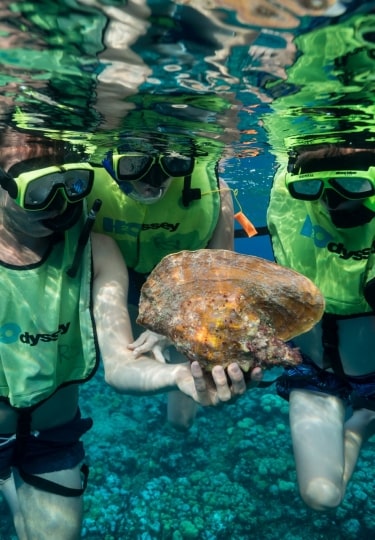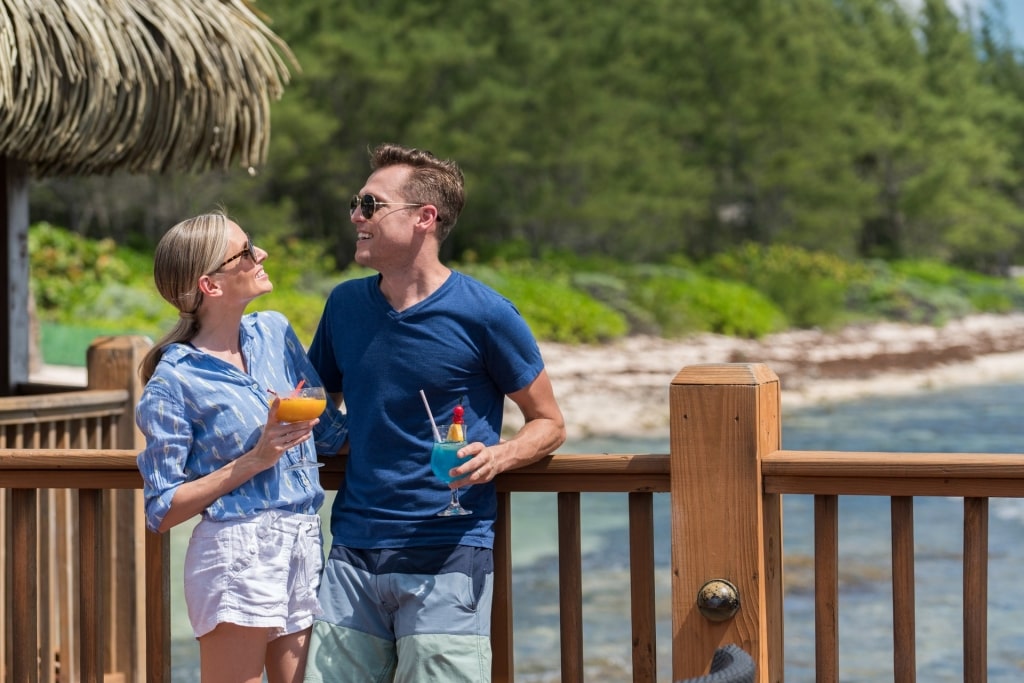Grand Cayman is the heart and soul of the Cayman Islands. Here, you’ll find a unique blend of luxury and elegance, mixed with the laid-back and inviting character of the Caribbean.
If you’re an avid snorkeler, then Grand Cayman may be the destination you’ve always dreamed about. The water here is clear, usually calm, and filled with a fantastic variety of wildlife, from colorful fish and rare coral to sharks, turtles, and eagle rays.
Grand Cayman snorkeling is some of the best in the world thanks to its accessible shipwrecks, protected marine reserves, and clear water that makes it easy to see deep into the underwater world.
Go on the Grand Cayman snorkeling adventure of a lifetime and discover these incredible places to explore the surrounding seas.
Stingray City
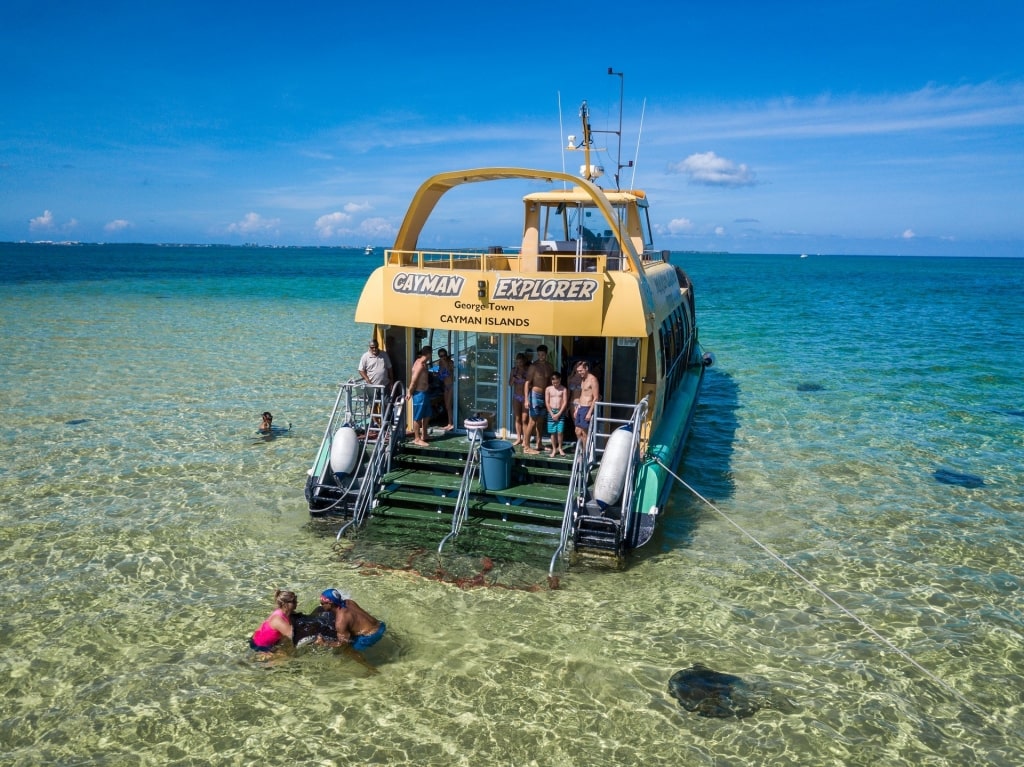
Stingray City
For a fantastic opportunity to get close to one of the most magical creatures in Grand Cayman, head to Stingray City. The “city” is located about 25 miles off the coast of Grand Cayman on the island’s very shallow sandbars—you can usually see stingrays in less than three feet of water. Snorkel gear will be provided by whatever boat you take, but you don’t even have to put your head below the water to see them if you don’t want to. The visibility is usually 50 to 75 feet and you’ll be able to stand in most places.
Don’t let the word “sting” scare you: the stingrays at Stingray City are very used to seeing people and won’t mind that you’re nearby. They’re quite friendly and may even “bump” you to ask for food. Most tour operators will have squid (a natural food source for the stingrays) available to feed them.
Because Stingray City is in the open ocean, you don’t need to worry about making the stingrays feel uncomfortable—they can just swim away once they’ve had their fill of snacks and nose rubs.
The Wreck of the Gamma
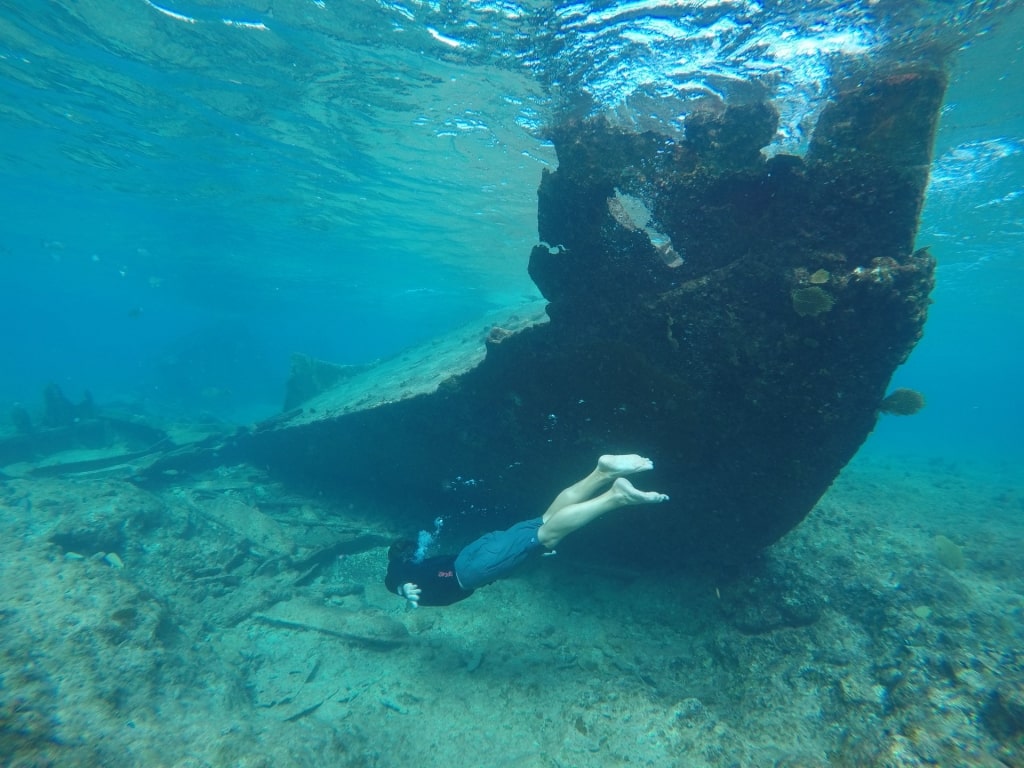
Wreck of the Gamma
Jump in the water off the island’s famous Seven Mile Beach for some of the best Grand Cayman snorkeling at the wreck of the Gamma. The wreck is one of the best-preserved wrecks in the Cayman Islands and, as with most wrecks, it now serves as a protected habitat for fish. On the wreck, you can often see huge parrot fish, tarpin (which can be more than five feet long), snappers, and even lobsters hiding under the ship.
The Gamma was beached in the 1980s on the shallow reef and has been slowly pushed closer and closer to shore by storms and weather. If you’ve never seen a shipwreck underwater before, this is one of the easiest and most accessible in the Carribean.
This snorkeling site is located at the southern end of the beach close to George Town. It’s very shallow, and you can see the entire hull from the surface.
Coral Gardens
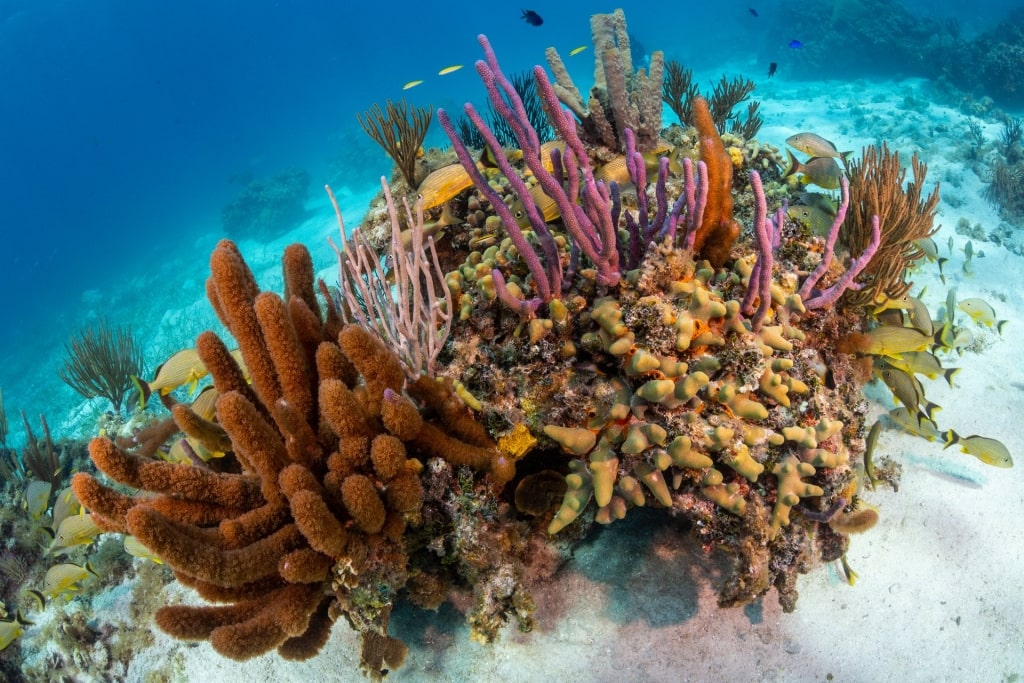
Coral Gardens
Some of the best Grand Cayman snorkeling is at Coral Gardens. The site is part of the North Sound, an area of water protected by a huge reef. Reefs are the center of activity for marine creatures, so you’ll often see fish feeding, small creatures hiding and darting in and out of the reef’s nooks and crannies, and larger fish circling the perimeter, looking for their next snack.
The site isn’t too far from Stingray City, so it’s possible to see stingrays swimming past or relaxing just under the sand on the ocean floor. The main draw here is the tropical fish, who are quite easy to spot as the reef is only about 10 feet below the surface.
You might see schools of small neon green Chromis, skinny silver barracudas, or even the blue-and-gold French angelfish. Beyond fish, you’ll likely spot sea fans, sponges, and the easy-to-identify colpophyllia coral, which resembles a human brain.
Smith’s Barcadere
If you’ve only got an hour or so to snorkel, head for Smith’s Cove, also called Smith’s Barcadere. Smith’s Cove, located close to Georgetown, is a large, sandy cove that’s well protected from waves and swells. It’s easy to get in the calm water here, and makes for a great spot to snorkel on windier days.
While snorkeling, you’ll almost always see tropical fish close to the shore. Because the beach’s rock formations extend underwater, you’ll usually be able to find crabs and nudibranch (colorful sea slugs). They live in the sand and cracks beneath the rocks in the water and are sometimes found hiding beneath sea fans (soft coral).
It’s best to go early in the morning to try to avoid the crowds. Smith Cove has public restrooms, shady areas for a post-snorkel snack, and large rocks you can jump off of when the water is clear and calm.
Cemetery Reef
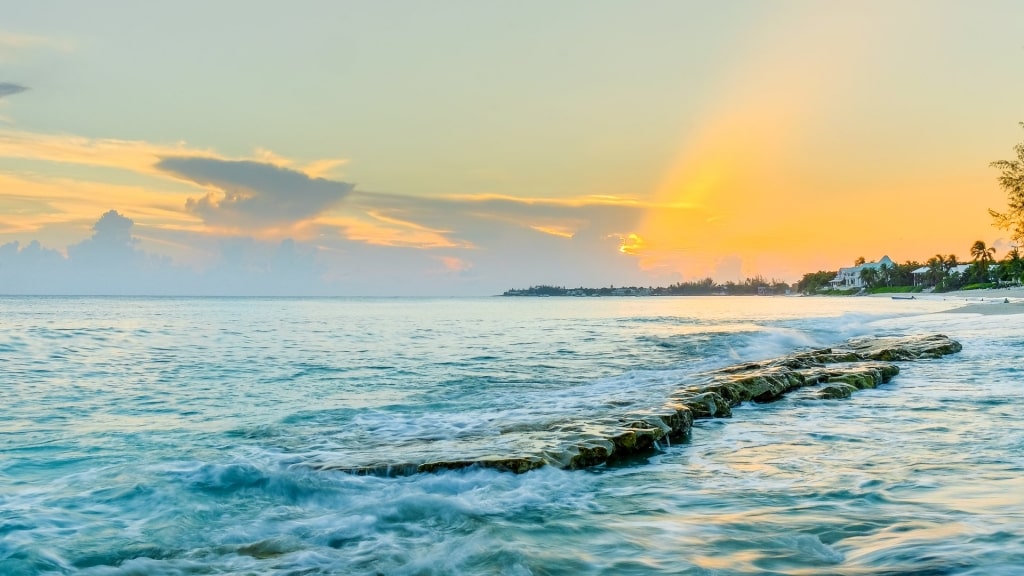
Cemetery Beach and Reef
Some of the best Grand Cayman snorkeling is at the somewhat eerily-named Cemetery Reef, just off Cemetery Beach, on the northern part of Seven Mile Beach. Fishing on the reef is illegal, so the marine population is thriving. This Grand Cayman beach is undeveloped with no amenities, so you’ll need to bring your own towel and snorkeling equipment. Because there isn’t much in the way of rentals or restaurants, it tends to keep the crowds low.
The reef is about 140 feet off the shore, so if you’re not a strong swimmer, you might want to wear a PFD (personal flotation device). The coral here is coned-shaped, rather than a traditional wall reef. The water here is deeper and further off the shore, and there’s a chance to see some larger marine animals, like turtles and smaller sharks.
The White House
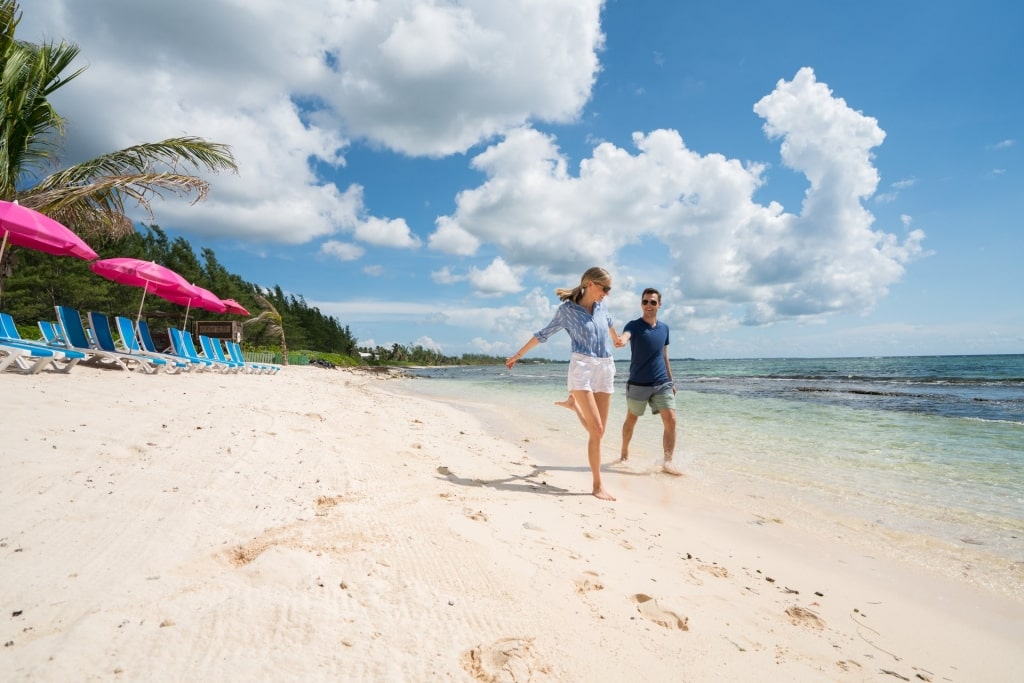
White House
The aptly named White House is a colonial mansion set on the beach in Bodden Town, the former capital of the Cayman Islands. The harbor town has an extensive reef just off the shore, and the White House has a private sandy beach adjacent to the reef. You can snag a lounge chair on the sand or relax on the large pier, which has thatched-roof huts, a full bar, and lounge seating over the water.
In between naps in the sun, be sure to borrow snorkel equipment from the White House. You won’t need to swim very far to see colorful fish and coral. If you can, try to snorkel during low tide. That puts you closer to the reef and gives you a better chance of seeing small creatures like shrimp, spiny lobsters, crabs, and spiny sea urchins.
USS Kittiwake
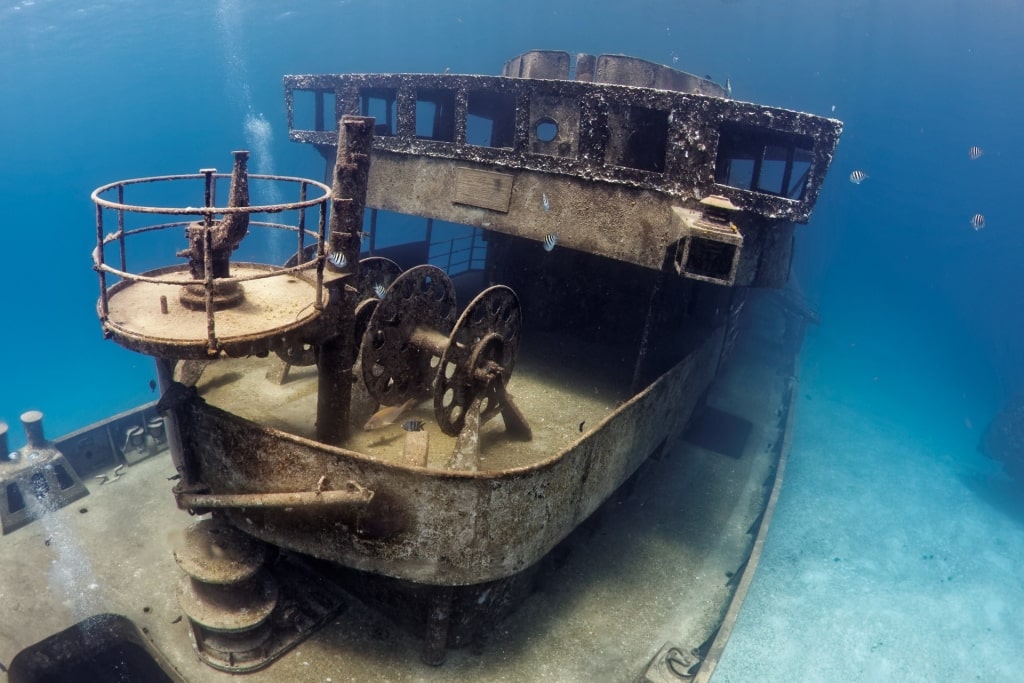
USS Kittiwake
A decommissioned submarine rescue vessel in nearly perfect condition, the USS Kittiwake is a scuba diver’s dream. But because the water is clear and stern is shallow, it’s also well known for being one of the best Grand Cayman snorkeling sites on the island. The stern sits in about 25 feet of water due to Hurricane Nate, which shifted the vessel from its shallower position back in 2017.
The USS Kittiwake is part of a marine park, and you’ll need to take a boat to get there. In addition to seeing scuba divers around the wreck, you may also see rays, eels, grouper, turtles, and even tiny sea worms and baby coral living on the 251-foot-long ship.
Read: Best Things to Do in Grand Cayman
The Wreck of the Cali
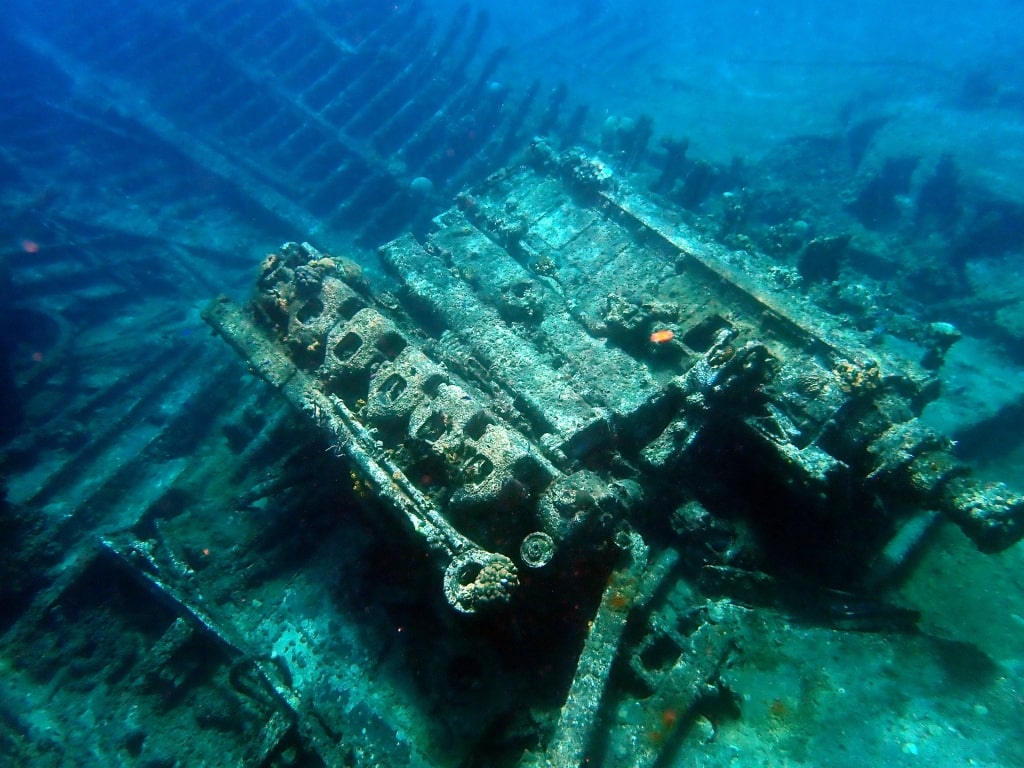
Wreck of the Cali
If you already snorkeled on the Gamma or don’t want to take a boat to the USS Kittiwake, you’re in luck: there’s one more fabulous shipwreck in Grand Cayman, and it’s incredibly accessible. The Wreck of the Cali sits in only about 20 feet of water, and since visibility in Grand Cayman can easily be 100 feet or more, you should have no problem getting a full view of the freighter, which sunk off George Town Harbor in the 1940s.
Unlike a ship that’s been intentionally sunk to become a reef or underwater attraction, the Cali wasn’t cleared or cleaned before it sank. You can still see parts of the engine, ropes, and other small details across the ship. If you have an underwater camera or GoPro, bring it with you, as the ship and its schooling fish are easy to photograph without the greenish tinge you often get in photos taken at deeper depths.
Starfish Point
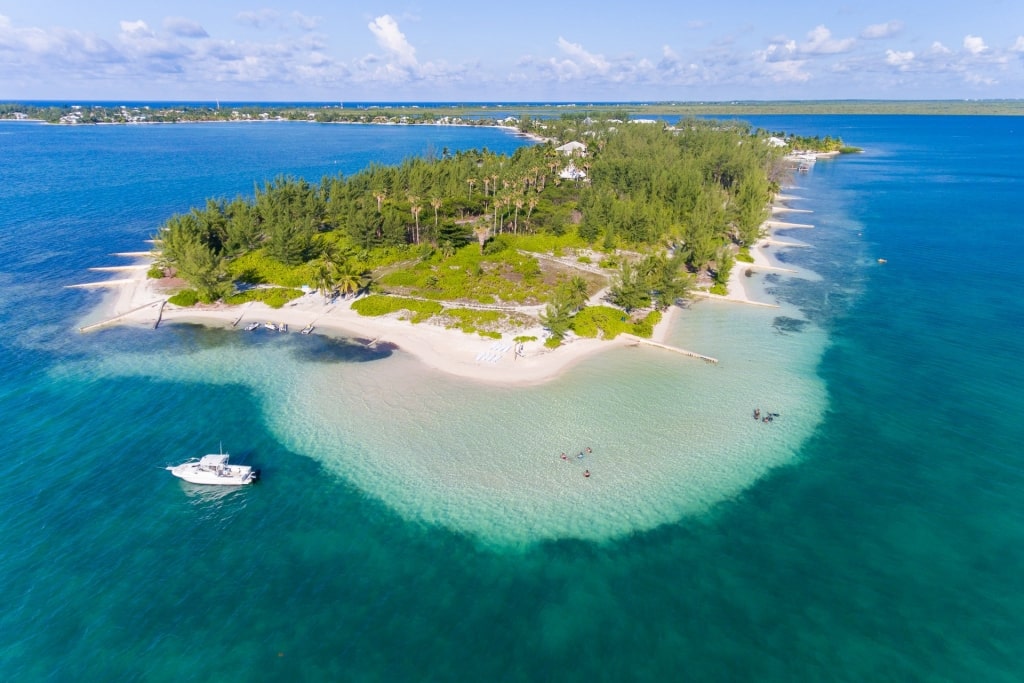
Starfish Point
Often visited on the same trip as Coral Gardens, Starfish Point is another Grand Cayman snorkeling spot you won’t want to miss. And as you might guess from the name, it’s not (just) fish you’ll see off this sandy beach—bright orange starfish are incredibly easy to spot in the shallow water.
Starfish Point is a peninsula opening onto Grand Cayman’s large, mostly protected bay, so the water is usually quite calm. You can drive there, but it’s easier and quicker to visit as part of a snorkeling tour. Depending on the tide, you may be able to practically stand the entire time— though if you are standing, be sure not to step on the starfish.
Don’t forget that the starfish are very much alive, so it’s important not to handle them or do anything that could cause them stress. In fact, it’s illegal in Grand Cayman to even take them out of the water.
Because of the shallow depth and clarity of the water, it’s easy to take great photos here. Bring a GoPro or an underwater case for your cell phone.
Taking a cruise to Grand Cayman is the best way to visit the luxurious island paradise. You can book guided excursions to the best snorkeling locations and see even more of the island.
Find out more about the beauty and wonder of Grand Cayman and browse cruise itineraries on our website today.
